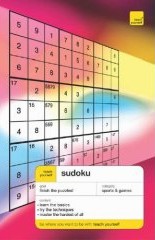 Death and Dying.
Death and Dying.
 Keep your mind young with Sudoku. How to solve sudoku -- easy rules.
Keep your mind young with Sudoku. How to solve sudoku -- easy rules.
 Advanced Sudoku and Kakuro -- rules for developing expertise.
Advanced Sudoku and Kakuro -- rules for developing expertise.
 Criminal Behavior.
Criminal Behavior.
 Criminal Justice Glossary.
Criminal Justice Glossary.
 Criminal Investigation.
Criminal Investigation.
 Introduction to Political Science.
Introduction to Political Science.
 Political Science Glossary.
Political Science Glossary.
 Biopsychology.
Biopsychology.
 Cognitive Psychology.
Cognitive Psychology.
 The Enneagram and Psychology
The Enneagram and Psychology
 Evolutionary Psychology.
Evolutionary Psychology.
 Personality Psychology
Personality Psychology
 Psychological research methods.
Psychological research methods.
Psychology books:
 Nature of Prejudice by Gordon W. Allport.
Nature of Prejudice by Gordon W. Allport.
 Learned Optimism by Martin E. P. Seligman.
Learned Optimism by Martin E. P. Seligman.
 Pessimism (defensive) (Norem).
Pessimism (defensive) (Norem).
 Ecology.
Ecology.
 Evolution.
Evolution.
 Disclaimer
Disclaimer
 Links.
Links.
 Books read recently.
Books read recently.
 Best books read.
Best books read.
 Harry Potter books.
Harry Potter books.

|
Teach Yourself Advanced Sudoku and Kakuro (2006)
by Nick Thomas. Very informative Sudoku book. Clear advice that takes you quickly from beginner to apprentice ninja. Lots of tips with helpful diagrams. Doesn't waste space with trivial sudoko puzzles. Helps you streamline your core skills in identifying: |

